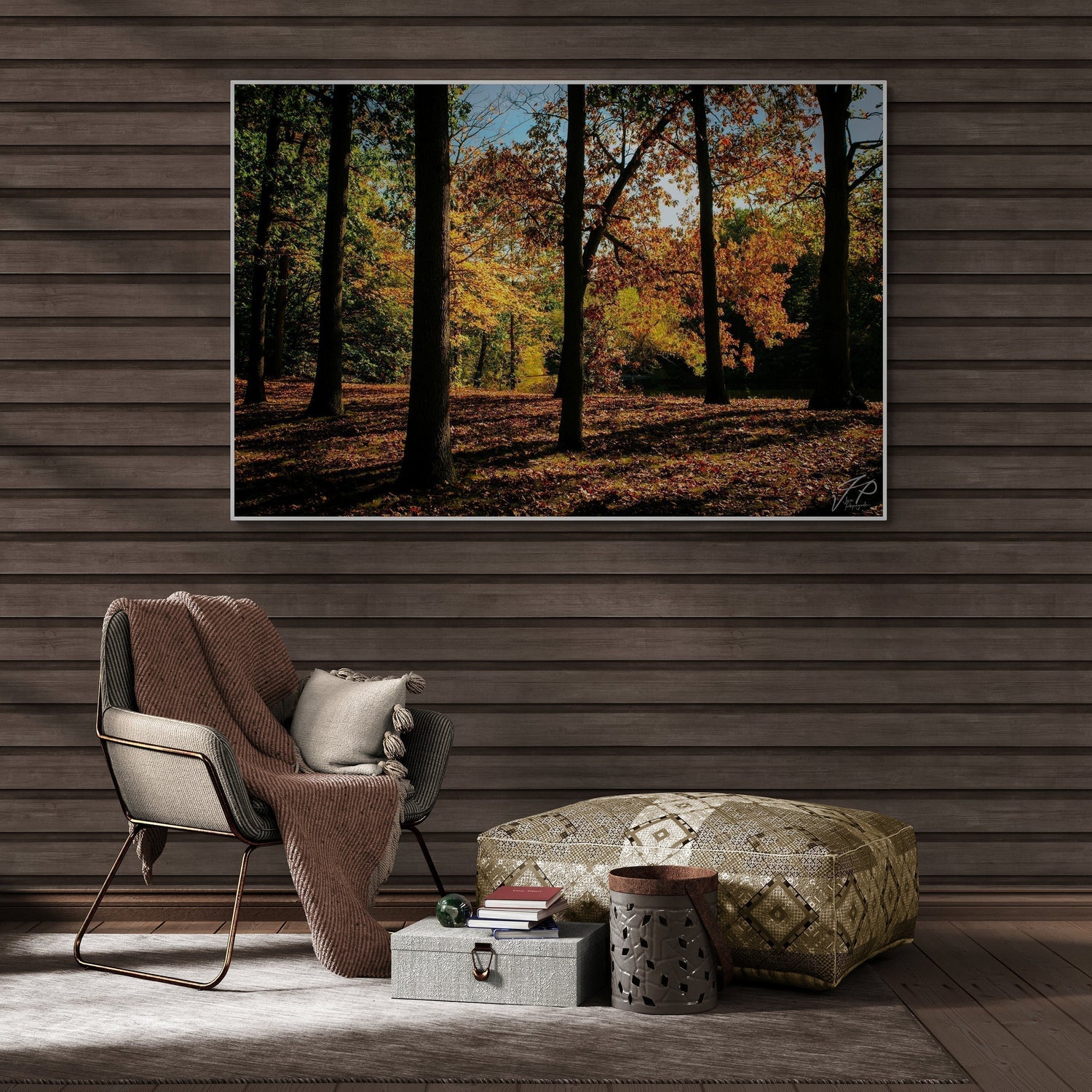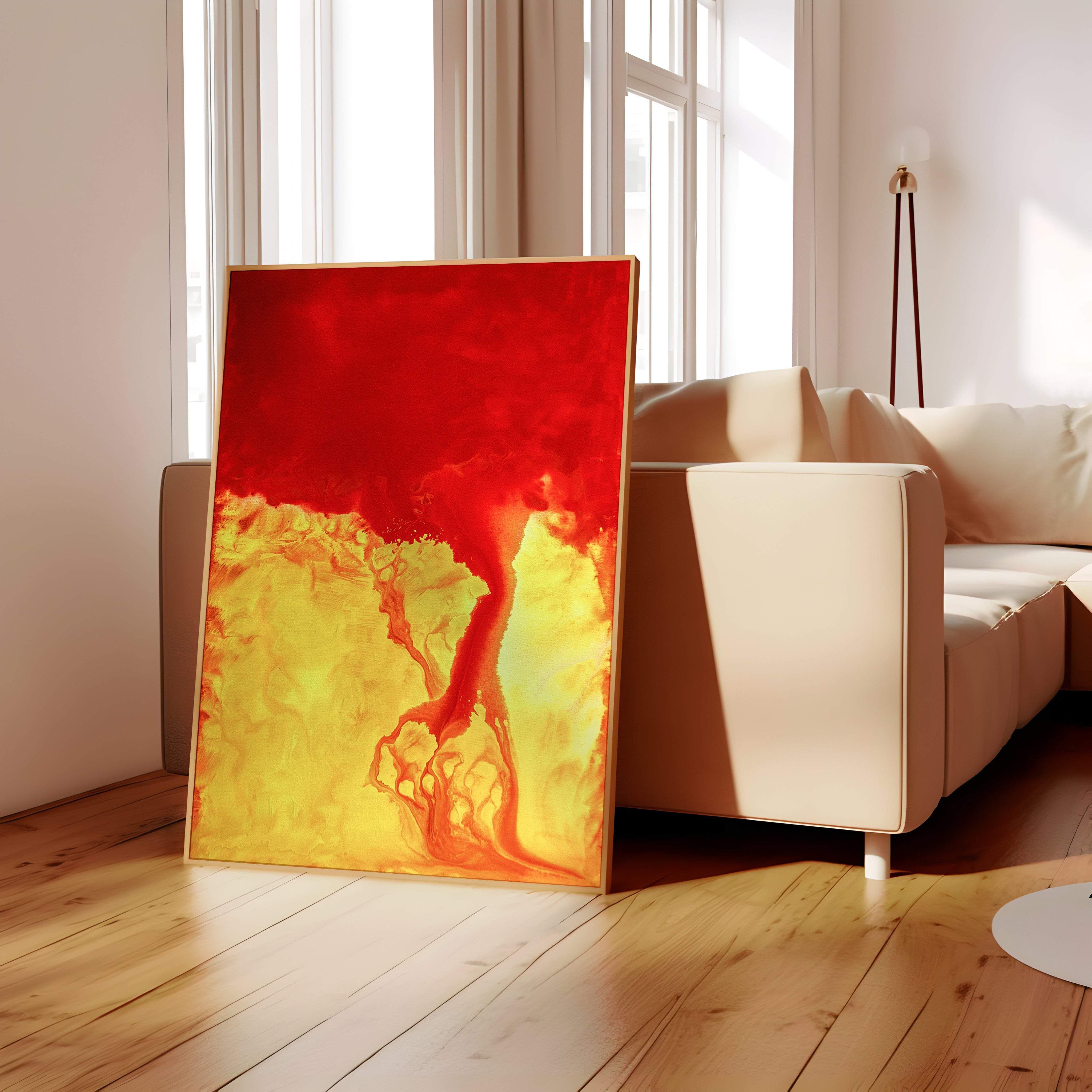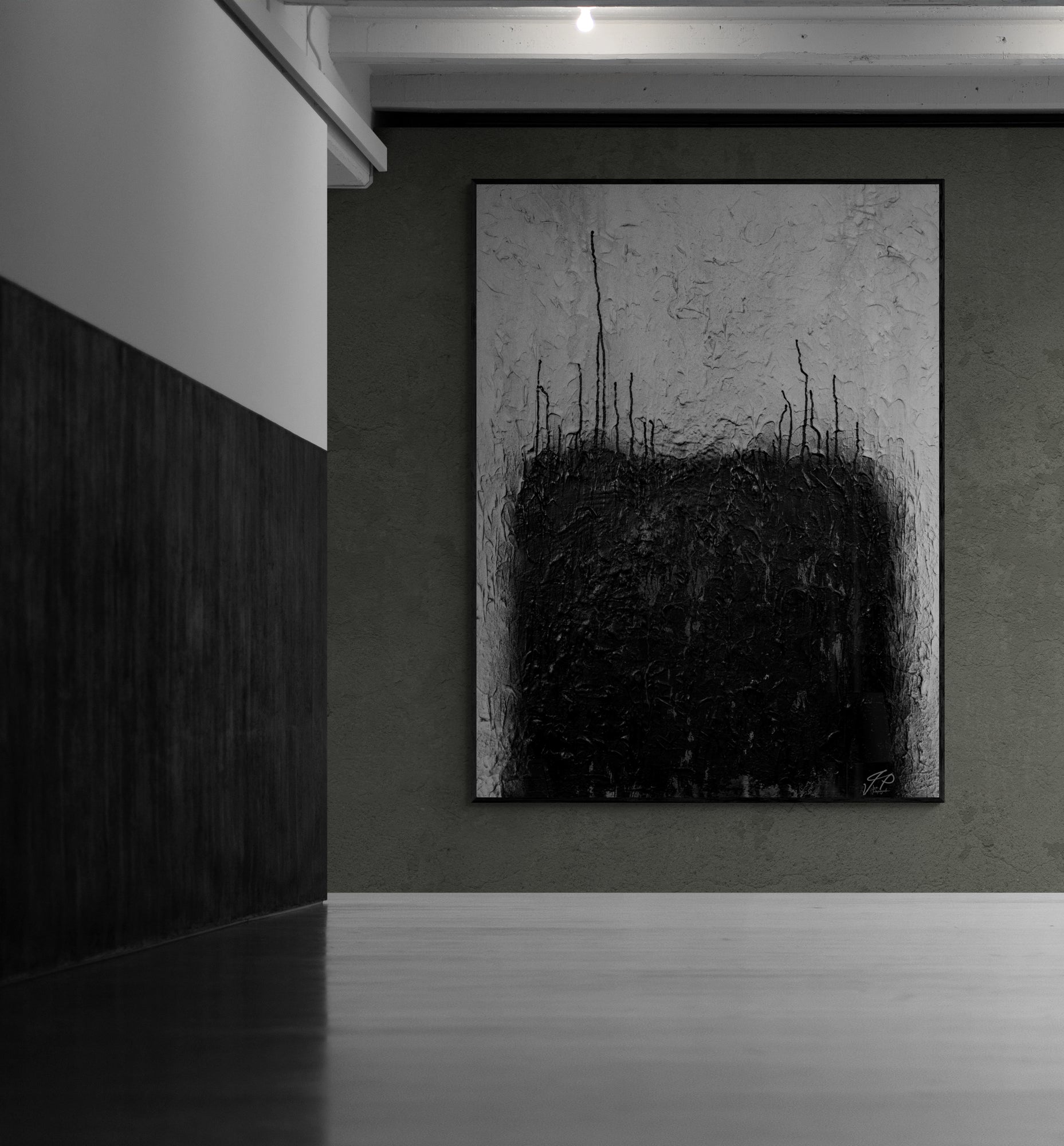Picking the right art for the home isn’t just about what looks pretty. One piece might appear bold and colorful in the shop or online, but once it's up on your wall, the light in your room can change how it looks completely. Natural light plays a big part in how colors show up, how textures are picked up by the eye, and how artwork feels in a space once it’s actually in place. If you’ve ever moved a piece from one wall to another and it suddenly looked different, you’ve already experienced this firsthand.
Choosing art with your room’s natural light in mind can make the difference between a piece that blends in quietly and one that truly shines. Whether the sun pours into your living room through ceiling-high windows or you’ve got north-facing rooms with a more muted glow, knowing how to match artwork with those changing conditions can help you create a space that feels comfortable, balanced, and right for how you live. Let’s take a closer look at how light and art work together inside your home.
Understanding Natural Light In Your Home
Not all sunlight is the same, and it doesn’t behave the same way throughout the day either. Even the direction your windows face changes the look and impact of art on your walls. If you’re not sure what kind of natural light you’re working with, here’s a quick breakdown to help you figure it out.
1. Morning light (East-facing rooms): The sun rises in the east, which means rooms with windows facing that direction get cooler-toned light earlier in the day. It starts soft but gets brighter quickly.
2. Afternoon light (West-facing rooms): These get the golden-hour glow, especially in the summer months. It can be warm, intense, and create strong shadows. Art in here needs to hold its own against strong highlights.
3. All-day consistency (North-facing rooms): Natural light here tends to be a bit softer and cooler overall. It stays consistent throughout the day but can wash out certain colors if not paired thoughtfully.
4. Bright and warm (South-facing rooms): These get strong light nearly all day. It’s great for energizing a room, but you’ll want to pay close attention to how direct sun affects your art pieces.
If you’re not totally sure about your light sources, walk through your home a few times during the day. Notice which areas stay bright longer, where the light shifts, or if anything causes glare. You don’t need to become a lighting expert, but observing how different spaces change will help you understand where and what kind of art makes the most impact.
One example: a client once realized their favorite fine art photograph looked flat in their hallway. Once it was moved to a softly lit bedroom with better balance between shadows and daylight, the piece suddenly came to life in a way it hadn’t before. That’s the kind of transformation that happens when you match artwork to the light, not just the wall space.
Choosing Art Based On Light Conditions
Some environments soak up sunlight all day long, while others stay on the dimmer side. That’s why it makes sense to think about how your art will behave based on your room’s brightness.
Here’s a useful way to decide what kind of artwork works where:
Bright Rooms With Lots of Light:
- Go bold with color. Bright or saturated reds, oranges, and deep blues tend to hold their own under strong sunlight.
- Avoid delicate materials that might fade over time. Stick with pieces printed on sturdy, UV-resistant surfaces if possible.
- Large abstracts, textured work, and vibrant photography can do really well in full-sun spaces.
Softly Lit or Dim Rooms:
- Try using lighter tones or more muted color palettes. Whites, creams, and pale blues can reflect the little available light, helping keep the space from looking too weighed down.
- Don’t overlook black-and-white photography or pieces that focus on strong contrast. They often show well in low light when brighter art might disappear into the shadows.
Mixed Lighting / Varying Conditions:
- Pick art that’s versatile. Mid-tone color schemes, layered textures, or art that feels dynamic can adapt better to shifting light.
- Make sure the piece doesn’t rely on only one type of lighting to stand out. Art with depth or visual movement tends to keep its charm both in natural and artificial light.
The way light bounces off your floors, walls, and furnishings also plays a role. Glossy surfaces might reflect more than you’d like, while matte walls and artwork will absorb and soften that glow. When you match the style and tone of your art to the natural feel of your room, it all starts to come together comfortably.
Balancing Light and Art Style

Once you’ve figured out how light plays across your space and picked art that won’t get washed out or overly shadowed, the next step is matching the artwork’s style to the vibe your room already gives off. Different types of art react in different ways depending on the light, and picking something that plays well with what you already have makes the room feel more pulled together.
Abstract paintings, for example, do well in bright, even lighting. That way, their textures and color transitions stay balanced throughout the day. If a room is flooded with natural light in the late afternoon, those warm golden tones can make warm-hued abstract pieces really glow. On the flip side, if you're dealing with cooler, more diffused light such as in a north-facing room, fine art photography with crisp lines and deeper contrast often looks better. That uniform lighting helps bring out the sharp details and doesn’t distort the tones.
A good tip is to figure out how busy or calm your space already is. Loud, energetic patterns work better in quieter rooms with clean, minimal décor. If a room already has a lot going on such as bold furniture, mixed textures, or busy flooring, then calming pieces with open space, soft lines, or minimal color shifts often balance things out.
Some options to explore based on light and interior tone include:

- Abstract painting with thick texture for rooms with strong daylight
- Minimalist black-and-white photography for soft or indirect light settings
- Nature-inspired photography for a grounded feel in high-contrast light areas
- Soft watercolor or mixed media pieces in rooms with moody, changing light
Try to stick to one visual language per room too. If you’ve got hard lines and metallics in your space, don’t overwhelm it with artwork that’s equally sharp or loud. Use your art to either support or mellow the existing design, not compete with it.
Practical Tips For Placement And Maintenance
Where you hang your art makes just as much of a difference as what art you pick. Natural light is great for atmosphere, but if it hits your artwork directly for long stretches, that same light can become the reason colors fade or paper warps. A few small adjustments in placement can go a long way in protecting your pieces and keeping your room looking intentional.
Here’s what to keep in mind when placing and caring for art based on light exposure:
1. Avoid direct sunlight whenever you can. Even strong mid-morning light can wear on colors or materials over time. If a wall gets hours of direct sun, consider installing adjustable shades or using that wall for less delicate items.
2. Use UV-filtering glass or acrylic when framing. This won’t stop all damage, but it cuts down a lot of the risk, especially for photography or art on paper.
3. Keep pieces away from heating or cooling sources. Sudden changes from AC vents or radiators can cause swelling or cracking in frames and canvases.
4. Watch for shadows. Big items like plants or lamps can cast awkward shapes across your art during certain times of day, which might flatten its impact or make it feel lost in the mix.
5. Leave breathing room. Art needs a little space around it to stand out. Don’t squeeze it between windows or furniture where it can go unnoticed.
For cleaning, just dust with a dry microfiber cloth every week or so. Skip sprays or water unless the piece is sealed and you’re sure it won’t get damaged. If a spot starts to look hazy or off-color, check to see if the light it’s getting during the day has changed before blaming the frame or glass.
By keeping these simple placement and care habits in mind, you’ll get a lot more time and enjoyment out of your artwork without needing constant upkeep. It’s all in watching how natural light behaves and being ready to shift a piece if needed.
Create A Bright And Inviting Space With Art
Natural light changes the energy of a room. The right artwork brings that energy to life. When you take a minute to pay attention to how light flows through each room, picking art for the home becomes less guesswork and more about feel.
Some rooms shine with sunlight all day. Others stay shaded and quiet. Each space has its own rhythm. Matching your art to that rhythm adds depth and harmony. And once it's all in place your colors, lighting, layout it's not just about looks. It's about how the space feels when you walk into it.
So go ahead and try out a few different pieces. Move them around. See how they shift with the light. You’ll know when it clicks, because the whole room settles into something that just feels right.
Embrace the creation of a stunning and harmonious environment by selecting the perfect art for your home. At ArtFinest, we offer a wide array of original pieces to match any space's unique lighting and style. Discover how thoughtfully chosen art for the home can brighten your space and bring everything together with ease.



